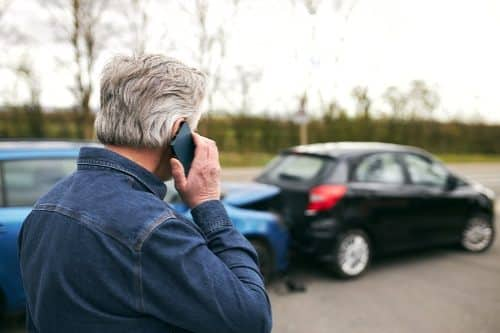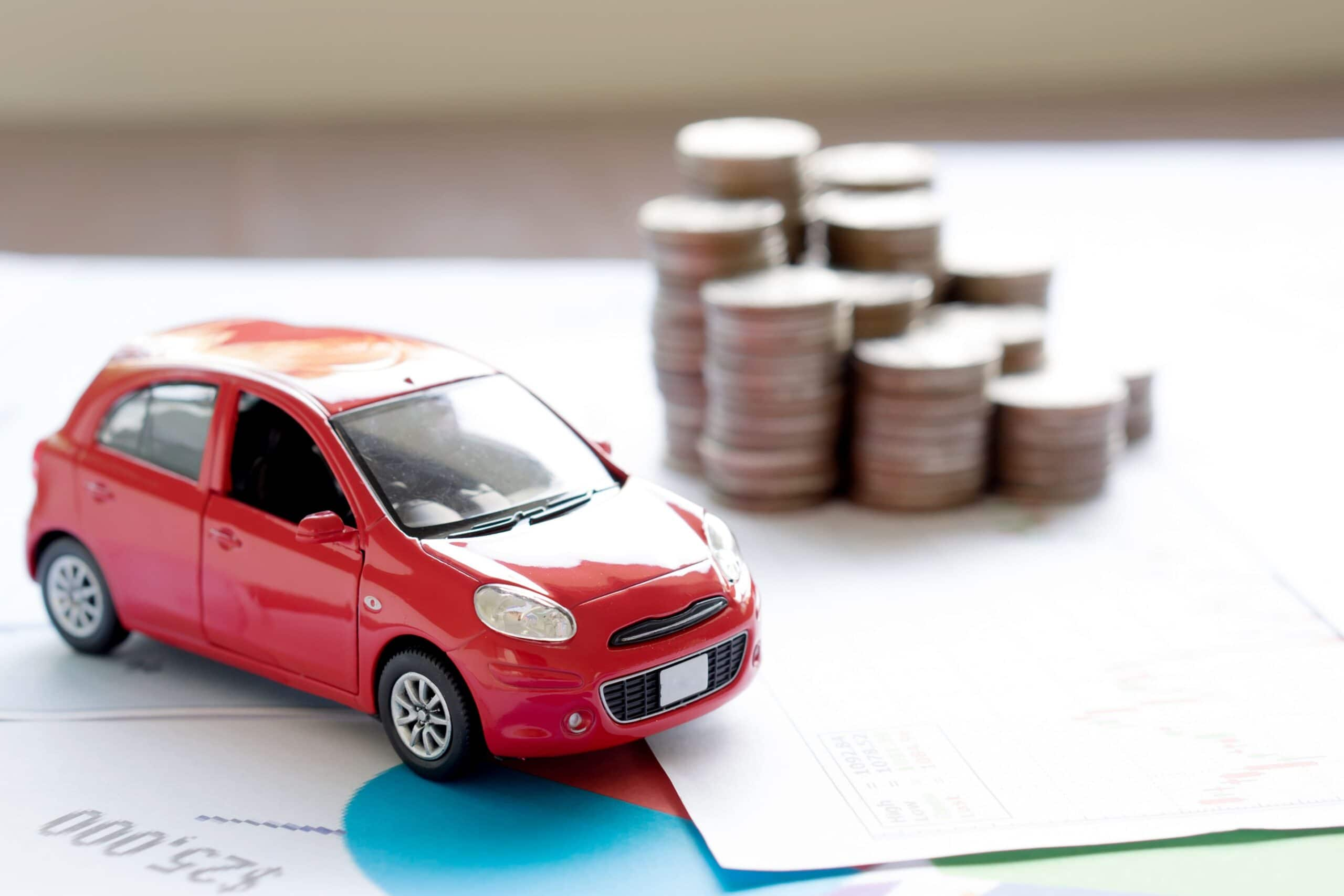Can you insure a totaled car?
Insuring a total loss vehicle is possible, but obtaining full coverage car insurance can be difficult, if not impossible. Companies that write car insurance policies for a vehicle with a rebuilt title or salvage title tend to offer liability only.
The insurance company may want to do an inspection or require a statement from a mechanic saying that the car is roadworthy.
For example, State Farm may provide a vehicle previously declared a total loss with a salvage title with comprehensive and collision coverageCollision coverage helps pay for repairs or replacement of your car if it's damaged in an accident, regardless of who is at fault and is subject to a deductible. if the vehicle has been repaired, subject to underwriting. However, not all cars will qualify. Having your own collision coverage can help in receiving payments for vehicle loss, even if a deductibleThe deductible is the amount you pay out of pocket for a covered loss when you file a claim. is required, rather than relying solely on the at-fault party's insurance.
“State Farm won’t insure a car that State Farm itself has declared a total loss,” says State Farm spokesperson Benjamin Palmer. “So, if you want to stay with your current company – for instance, if you want to keep a multiline discount – and you have State Farm insurance, you may be out of luck. State Farm will, however, insure a salvaged car that has been totaled out by another insurer.”
How is total loss value calculated?
Total loss is calculated based on the actual cash valueActual Cash Value (ACV) is the current market value of your car, considering depreciation. It's the amount your insurance will pay if your car is totaled or stolen. of the car vs. the cost of the repairs. Each state has its own laws regarding total loss calculations, but most use a Total Loss Formula (TLF). The TLF is a simple calculation: the car's pre-accident value (its actual cash value) must be less than the combined total cost of repairs and the car's scrap value.
However, some states use a simple percentage of the car's value. Take a look at the total loss threshold by state below.
| State | Rule | What you should know |
|---|---|---|
| ALABAMA | 75% | The vehicle is considered a total loss if the damage is greater than 75% of its fair retail value prior to damage. |
| ALASKA | Total Loss Formula (TLF) | The car is considered a total loss if the cost of repairing damage to the vehicle exceeds the vehicle’s worth or insured value. |
| ARIZONA | Total Loss Formula (TLF) | The insurer determines if it is uneconomical to repair the vehicle. |
| ARKANSAS | 70% | Considered total loss if damage to the vehicle is greater than 70% of fair retail value prior to damage or the vehicle is water damaged. |
| CALIFORNIA | Total Loss Formula (TLF) | A vehicle is a total loss when the cost of repair exceeds the vehicle's value before the repair. |
| COLORADO | 100% | Cost of repairing the vehicle exceeds the retail fair market value. Retail value is determined by sources accepted by the insurance industry. |
| CONNECTICUT | Total Loss Formula (TLF) | The cost of repair exceeds fair retail market value. Insurers must use NADA** average and one additional approved source. |
| DELAWARE | Total Loss Formula (TLF) | The insurer determines if the vehicle is a total loss. |
| DISTRICT OF COLUMBIA | 75% | Damage to the vehicle exceeds 75% of retail value prior to the damage. |
| FLORIDA | The insurer determines whether the vehicle is a total loss. | The insurance company can declare your vehicle a total loss if they think it’s cheaper to do so than to repair it. If you and the insurance company agree to repair the vehicle instead of replacing it, it won't be considered a total loss. However, if the repair costs exceed 100% of the car's value, it must be labeled as a "Total Loss Vehicle." |
| GEORGIA | Total Loss Formula (TLF) | Vehicle is damaged to the extent that its restoration to an operable condition requires replacing two or more major component parts. |
| HAWAII | Total Loss Formula (TLF) | The insurer determines if a vehicle is repairable or a total loss. The vehicle must have material damage to its frame, unitized structure, or suspension system, and the cost of repairing the damage must exceed market value. |
| IDAHO | Total Loss Formula (TLF) | The cost of parts and labor minus the salvage value makes it uneconomical to repair or rebuild. |
| ILLINOIS | Total Loss Formula (TLF) | The insurer determines when a vehicle is a total loss. Must not be from hail damage or a vehicle that is nine model years or older. |
| INDIANA | 70% | The cost to repair the vehicle is greater than 70% of fair market value prior to damage or the insurer determines it is impractical to repair and makes a total loss payment. |
| IOWA | 50% | Damage disclosure requirements kick in at 50%. If the cost to repair the vehicle is greater than 50% of ACV then the vehicle must have a damage disclosure on the title and it becomes "wrecked or salvage vehicle." |
| KANSAS | 75% | The cost to repair the vehicle is 75% more than the fair market value at the time immediately before it was wrecked. |
| KENTUCKY | 75% | The cost of parts and labor to rebuild the vehicle to pre-accident condition exceeds 75% as set forth in NADA** price guide. |
| LOUISIANA | 75% | Damage equivalent to 75% or more of the market value as determined by NADA**. |
| MAINE | Total Loss Formula (TLF) | The vehicle is salvaged when the insurer declares it a total loss or a salvage title is issued. The owner transfers the vehicle to the insurer due to damage or the owner determines it has no marketable value. |
| MARYLAND | 75% | Cost to repair the vehicle exceeds 75% of the fair market value. |
| MASSACHUSETTS | Total Loss Formula (TLF) | The insurer determines if it is uneconomical to repair the vehicle and the vehicle is not repaired. |
| MICHIGAN | 75% | If the cost of repair, including parts and labor, is between 75% and 91% of the actual cash value, then a salvage title is given. |
| MINNESOTA | 80% | Damage to late-model vehicles (newer than six years old) or high-value vehicles (over $5,000) exceeds 80% of their actual cash value. |
| MISSISSIPPI | Total Loss Formula (TLF) | The vehicle cannot be more than 10 years old, have a value of less than $1,500, or damage that requires replacement of five or few minor components. Also, applies to a vehicle that requires the replacement of more than five minor component parts according to the insurer. |
| MISSOURI | 80% | Vehicle less than 6 years old and if damage exceeds 80% of the fair market value. |
| MONTANA | Total Loss Formula (TLF) | The insurer determines if the vehicle is a total loss. It is a salvage vehicle if the insurer decides it is uneconomical to repair, considering parts and labor. |
| NEBRASKA | 75% | Late-model vehicle damage exceeds 75% of the retail value at the time it was wrecked, damaged, or destroyed. "Late model vehicle" means a vehicle that has (a) a manufacturer's model year designation of, or later than, the year in which the vehicle was wrecked, damaged, or destroyed or any of the six preceding years. |
| NEVADA | 65% | Vehicle damage exceeds 65% of the fair market value. |
| NEW HAMPSHIRE | 75% | Cost for vehicle repair is 75% or more of its fair market value prior to being damaged. |
| NEW JERSEY | Total Loss Formula (TLF) | The insurer determines if it is "economically impractical" to repair the vehicle or cost of repairs is higher than the market value of the vehicle. |
| NEW MEXICO | Total Loss Formula (TLF) | The cost for vehicle repair is 75% or more of its fair market value prior to being damaged. |
| NEW YORK | 75% | The cost to repair the vehicle is 75% or more of retail value prior to being damaged by a nationally recognized compilation of retail values. |
| NORTH CAROLINA | 75% | The cost of vehicle repair is 75% or more of its fair market value prior to being damaged. |
| NORTH DAKOTA | 75% | Vehicle damage exceeds 75% of the retail value of the vehicle determined by NADA**. Glass and hail damage are excluded. |
| OHIO | Total Loss Formula (TLF) | The insurer determines if it is economically impractical to repair the vehicle. |
| OKLAHOMA | 60% | The cost to repair damage to the vehicle exceeds 60% of fair market value. |
| OREGON | 80% | Damage to vehicle is equal to or more than 80% of retail market value. |
| PENNSYLVANIA | Total Loss Formula (TLF) | The extent of repairs to the vehicle would exceed the value of the repaired vehicle. Doesn’t include antique or classic cars. |
| RHODE ISLAND | Total Loss Formula (TLF) | The insurer decides if a vehicle is totaled, there are two classifications, A and B. A is the vehicle is good for parts only and B is the vehicle is repairable. |
| SOUTH CAROLINA | 75% | The cost of repairing the vehicle exceeds 75% of the fair market value of the vehicle. |
| SOUTH DAKOTA | Total Loss Formula (TLF) | Insurer or self-insurer determines a total loss. |
| TENNESSEE | 75% | Damage to vehicle equal to or more than 75% of retail market value as determined by current published retail costs. |
| TEXAS | 100% | If the total cost of repairs exceeds the ACV of the vehicle, then it is a salvage vehicle. |
| UTAH | Total Loss Formula (TLF) | Insurer makes the decision whether a vehicle is declared a non-repairable vehicle. Or, two or more major components suffer major damage. |
| VERMONT | Total Loss Formula (TLF) | Insurer makes the decision whether a vehicle (less than 10 years old) is declared a total loss. |
| VIRGINIA | 75% | The cost to repair late model vehicle exceeds 75% of ACV prior to the vehicle being damaged, then the vehicle is issued a non-repairable certificate or a salvage certificate. |
| WASHINGTON | Total Loss Formula (TLF) | The insurer determines whether the cost of parts and labor plus salvage value has made it uneconomical to repair and the vehicle is more than 6 years old. |
| WEST VIRGINIA | 75% | The cost to repair the vehicle is greater than 75% of the market value determined by a nationally accepted used car value guide. |
| WISCONSIN | 70% | Damage exceeding 70% of fair market value will render a vehicle less than seven model years old a salvage vehicle. |
| WYOMING | 75% | For the vehicle to be in pre-accident condition, labor to rebuild and parts exceed 75% of the ACV of the vehicle. |
*Fair market value
**National Automobile Dealers Association
Is it worth insuring a car that has been totaled?
If you have a totaled car that is still drivable or has been repaired, you must insure it to be on the road legally. Liability insurance is required by law in most states, so you need insurance whether you’re driving a totaled car or a brand-new one.
However, in most cases, carrying full coverage insurance for a totaled car is not worth it. That’s because a car with a salvage title has lost most of its value. This might not be the case if you have a collector car.
During repairs, if your car is in a garage and non-operational, you probably don’t need to insure it.
Can you keep a totaled car?
One of the options for a totaled car is to keep it, which is legal in most states. If you keep your salvage vehicle, you will be paid the actual cash value of the car minus the salvage value and the deductible. The actual cash value is assessed based on the retail market value, which insurers use to determine the amount owed to you, especially when comparable cars can't be found nearby.
The salvage value is the amount the insurance company would have gotten from a salvage yard for your car. Since you’re keeping the car, you won’t be paid that amount.
If you’re considering salvaging your totaled vehicle, there are some factors that you’ll want to consider before you decide.
- Cost of repair. Is it worth it to repair a totaled car? The insurance company didn’t think so.
- Insurance. Find out if you can insure the car and what it will cost.
- Resale value. The actual cash value of your car will be much lower after salvage.
- State laws. Make sure it’s legal in your state to keep your totaled vehicle even if it is not drivable.
- Financing. You may need the insurance payout to cover your loan.
Can you drive a car with a salvage title?
If your car has a salvage title, you can't legally drive it on the road until you’ve had the car inspected, gotten a new title and registered it with the Department of Motor Vehicles. The title on a car that has been repaired and inspected may be called a rebuilt title rather than a salvage title. The formula for total loss cars depends on the state.
Once you have done this, you must get the required insurance in your state to drive the car.
How does a rebuilt title affect insurance?
Insurance for a rebuilt car is more expensive, usually because the insurance company is taking the risk that the car wasn’t repaired properly or fully and could be dangerous on the road.
If you have a car with a rebuilt or salvage title, you will likely find it difficult to get full coverage insurance. While a car can be totaled twice, the value of a previously totaled vehicle is much lower. You won’t see the same amount of money the second time around.
What is a total loss?
A total loss is a car that the insurance provider determines isn't worth repairing based on its calculation of the car’s actual cash value vs. the cost of repairs.
If it will cost more to repair the car than it was worth before the crash, the car is considered totaled. And the repair costs typically need not even be that high. In Iowa, for example, state law requires that an insurance company declare a vehicle as “salvaged,” or totaled, if the repair costs would exceed just 50% of the vehicle’s pre-crash value. Other states have higher thresholds, many at 75% or using a total loss formula (TLF) to calculate the value vs. the repair cost.
If your vehicle is determined to be totaled, your insurer will pay you the pre-crash market value minus your deductible, as long as you have comprehensive or collision coverage on the vehicle. Once you accept the settlement offer, you will transfer ownership of the car to the insurance company.
Insurance coverage for total loss vehicles
When a car is totaled, the insurance company will typically offer a settlement amount based on the car’s actual cash value (ACV). The type and extent of insurance coverage available for total loss vehicles can vary depending on your insurance policy and the specific circumstances of the loss. While some policies may offer comprehensive coverage, others might only provide liability coverage, especially if the vehicle has a salvage title.
Collision and comprehensive insurance
Collision and comprehensive insurance are two types of coverage that can help pay for damages to a vehicle in the event of an accident or other covered loss. If a car is totaled, these coverages can help pay for the ACV of the vehicle, minus any deductible. Collision insurance covers damages resulting from a collision with another vehicle or object, while comprehensive insurance covers non-collision-related incidents like theft, fire, or natural disasters.
However, it’s essential to note that collision and comprehensive insurance may not cover the full value of the vehicle, especially if the vehicle is older or has high mileage. In such cases, the insurance company may only pay out the ACV, which could be lower than the vehicle’s actual value. This is why understanding the limitations of your coverage is important when insuring a totaled car.
Gap insurance and new car replacement insurance
Gap insurance and new car replacement insurance are two types of coverage that can help bridge the gap between the ACV of a totaled vehicle and the actual amount owed on the vehicle. Gap insurance is particularly useful if you owe more on your car loan or lease than the car’s ACV. It pays the difference between the ACV and the remaining balance on your loan or lease.
New car replacement insurance, on the other hand, covers the difference between the car's cash value and the cost of purchasing that exact car again new. When you drive a new car off the lot, it officially becomes a "used" car and loses value immediately. If you total your new car on your way home from the dealership, the car's cash value would be less than the cost of replacing it. Replacement coverage would make up the difference, allowing you to buy another car exactly like the one you totaled.
What happens when a car is totaled?
When a car is totaled, the insurance company will typically follow a specific process to determine the ACV of the vehicle and offer a settlement amount. This process involves assessing the car’s pre-accident condition, mileage, and market value. The insurance company will then compare the repair costs to the car’s ACV to decide if it’s more economical to declare the car a total loss.
Steps to take after totaling a car
If your car is totaled, here are some steps you can take:
- Contact your insurance company: Notify your insurance company as soon as possible to report the loss and initiate the claims process. This is the first and most crucial step in dealing with a totaled car.
- Get a repair estimate: Obtain a repair estimate from a trusted mechanic or repair shop to determine the extent of the damage. This will help you understand whether the car is truly a total loss.
- Determine the ACV: Work with your insurance company to determine the ACV of your vehicle, which will be used to calculate the settlement amount. Ensure that the ACV reflects the car’s condition and market value accurately.
- Review and negotiate the settlement: Review the settlement offer from your insurance company and negotiate if necessary to ensure you receive a fair payout. Don’t hesitate to provide evidence or documentation to support your case.
- Consider gap insurance or new car replacement insurance: If you owe more on your vehicle than its ACV or want to ensure you can replace your vehicle with a new one, consider purchasing gap insurance or new car replacement insurance. These coverages can provide additional financial protection and peace of mind.
Do I need to notify the DMV if my car is totaled?
If you decide to keep a car that has sustained significant damage, then you or the insurance company — it varies by state — must report the damage to the state's Department of Motor Vehicles. These laws protect would-be buyers, who might otherwise be unaware that the car was totaled.
Under the National Motor Vehicle Title Information System, established in 2008, insurance companies and salvage yards must submit information on vehicles damaged by crash, fire, flood or other calamities. The data is available to DMVs, the police, and, for a fee, to the public.
Frequently asked questions
Can you drive a totaled car?
Yes, driving a totaled car is permitted, as long as the car is safe to drive and is registered and insured.
How do you know if your car is totaled?
The insurance company will notify you if your car is totaled based on your state's total loss threshold.
What happens when your car is totaled but still drivable?
Whether or not the car is drivable, a totaled vehicle will belong to the insurance company unless you make arrangements to keep it.





